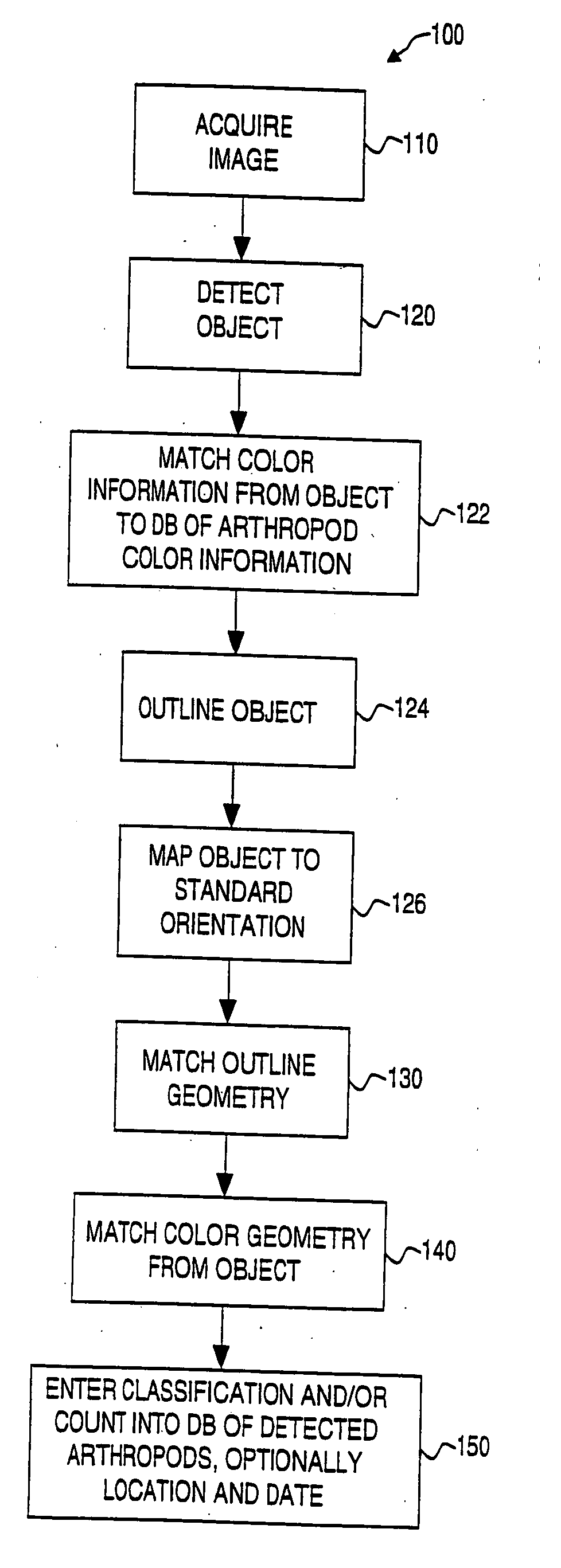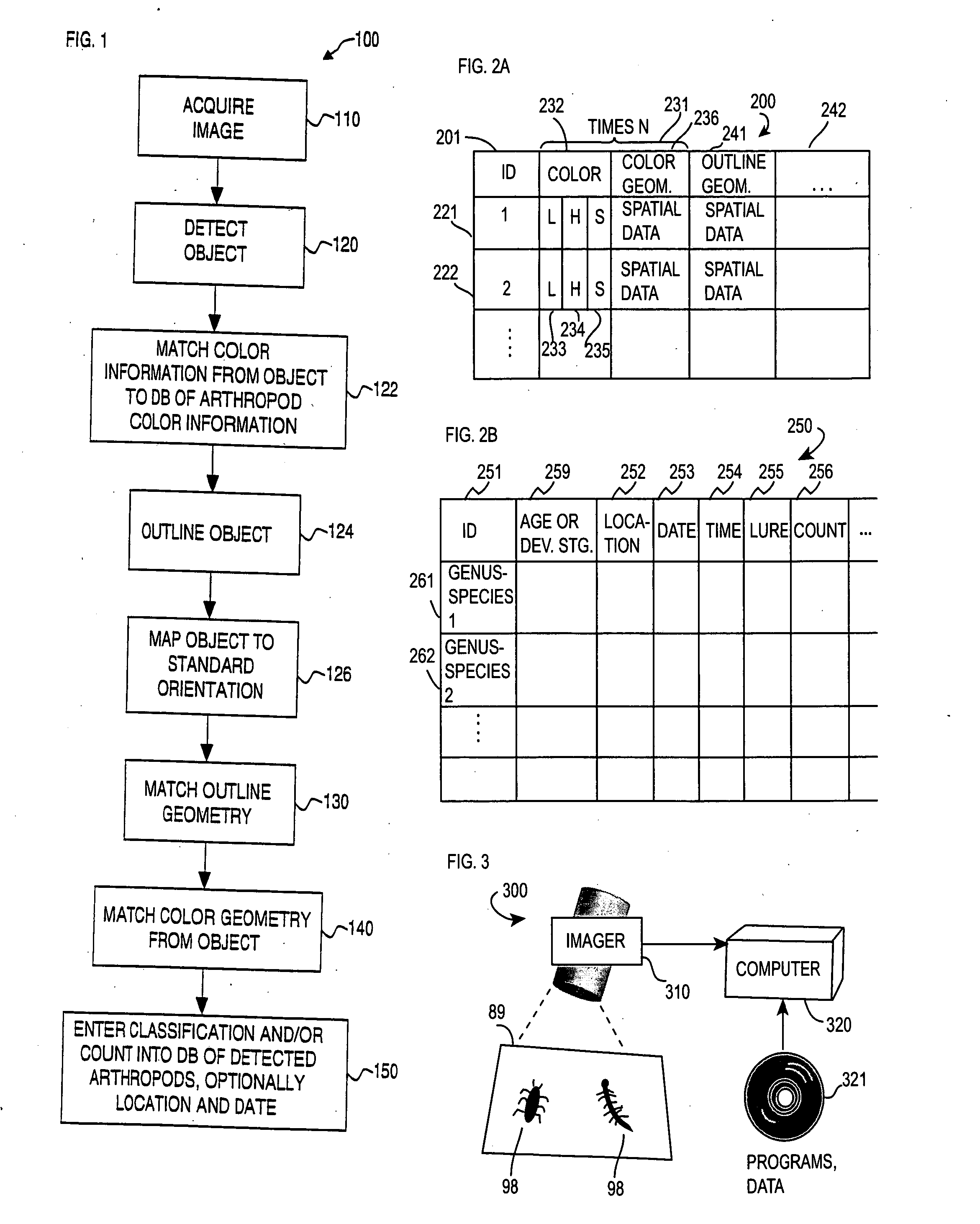Method and system for detecting and classifying objects in images, such as insects and other arthropods
a machine vision and object detection technology, applied in the field of automatic machine vision recognition, can solve the problems of transferring pathogens among people and other animals, significant damage and loss of plants, wood and fiber, etc., and achieve the effect of improving taxonomic capabilities
- Summary
- Abstract
- Description
- Claims
- Application Information
AI Technical Summary
Benefits of technology
Problems solved by technology
Method used
Image
Examples
experiment 1
Equipment Setup. See FIG. 6.
1.—An Epson Perfection 1200U scanner communicated with a Macintosh Power Mac G4 (Mac OS X Version 1.5 operating system) via a Universal Serial Bus (USB) connection. The scanner used the TWAIN 5 software. This software allows the user to collect images and adjust image quality. The TWAIN software initially shows a preview image of the entire scanning surface. A portion or subwindow was then selected that included all of the insects / arthropods, before the final full-resolution image was requested. The resulting images were saved to a bitmap format file for further processing. The scanner has an imaging surface that is 21.6 by 27.9 centimeters in area (8½ by 11 inches) and can collect images of resolutions ranging from 50 to 9,600 dpi. The scanner can save the color as 24 or 48 bit information. A spatial resolution of 96 dpi and 24-bit color were used. To avoid crushing the insects on the scanner's glass surface with the scanner's cover or lid, a white card...
experiment 2a
Experiment 2A provides another demonstration of the validity and practicality of the concepts of some embodiments. Some embodiments are able to detect insects within an image. With the statistical features that the software extracts and the nearest-neighbor classifier that uses these features, insects are recognized that are included in the training / feature file. Objects that were not intended to be detected and counted—clutter—were appropriately assigned to a class called OTHER or unknown. It was again demonstrated that both the detection and classification of arthropods can be automated.
experiment 2b
This experiment demonstrated the versatility and strength of the systems to identify insects even when they overlap (occlusion). Dealing with occlusion can be important. While a user who places his arthropods on a scanner for counting and identification always has the option of making sure the insects don't overlap or touch one another in order to insure greater accuracy (as in Experiment 1 here), this will not always be possible. It will not be possible to prevent occlusions when embodiments of the systems are configured to include unattended insect-monitoring devices in the field, such as sticky traps. In this situation, a sticky surface, where insects are trapped, will be scanned by an imaging device and the resulting images analyzed. As insects accumulate over time they will overlap (occlusion). The demonstration here illustrates that the software has two ways to deal with overlap in arthropod specimens: 1) subtracting from the occlusion arthropods that were previously detected...
PUM
 Login to View More
Login to View More Abstract
Description
Claims
Application Information
 Login to View More
Login to View More - R&D
- Intellectual Property
- Life Sciences
- Materials
- Tech Scout
- Unparalleled Data Quality
- Higher Quality Content
- 60% Fewer Hallucinations
Browse by: Latest US Patents, China's latest patents, Technical Efficacy Thesaurus, Application Domain, Technology Topic, Popular Technical Reports.
© 2025 PatSnap. All rights reserved.Legal|Privacy policy|Modern Slavery Act Transparency Statement|Sitemap|About US| Contact US: help@patsnap.com



